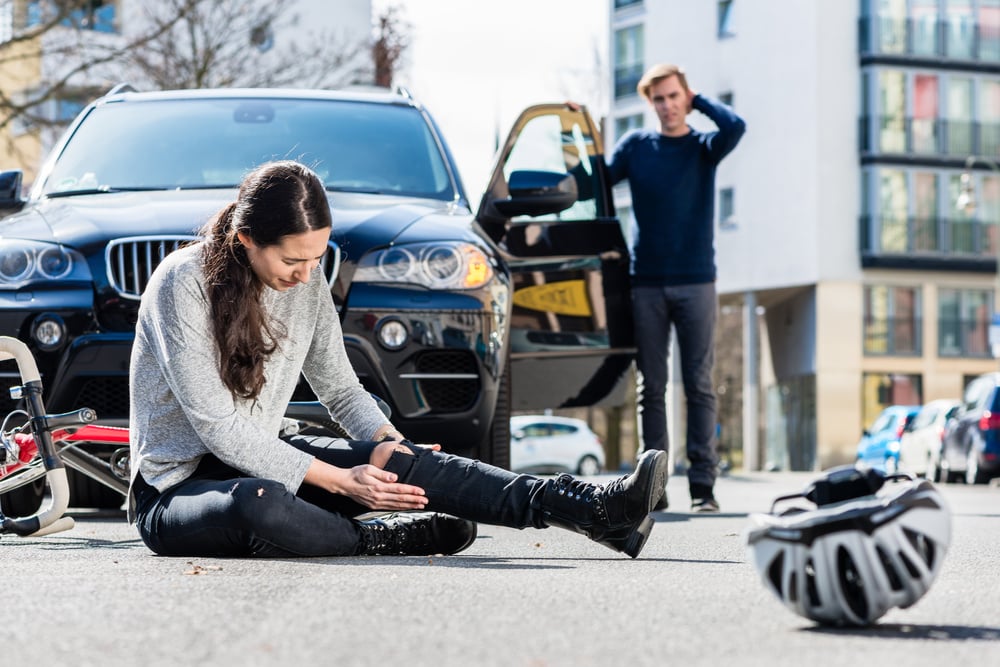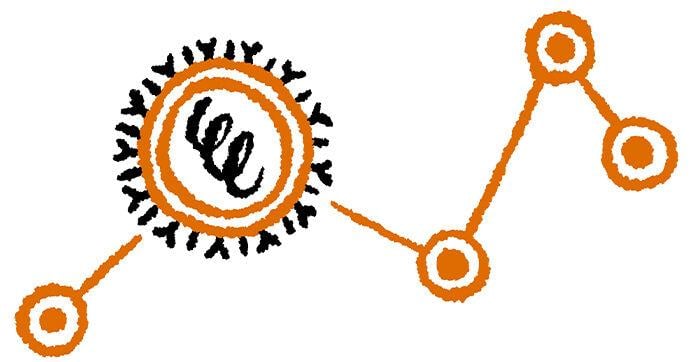Health
How To Respond To Life-Threatening Injuries

|
|
Emergencies can happen anytime, and knowing how to respond to life-threatening injuries is crucial in ensuring the safety and well-being of those involved.
Life-threatening injuries pose a serious risk to an individual’s health and survival. These injuries often require immediate medical attention and can include severe burns, head or brain injuries, stab or gunshot wounds, and internal bleeding.
Knowing how to respond in emergencies can significantly impact the outcome for those who have suffered life-threatening injuries. By following the appropriate steps, you can provide vital care and support to the injured person until emergency medical services arrive. For further reading on responding to emergencies, consider consulting with a medical professional or referring to reliable sources online.
Accordingly, keep reading to learn the practical steps to respond to life-threatening injuries.
- Assessing The Situation
When faced with a life-threatening injury, it’s crucial to remain calm and take immediate action to assess the situation and provide the necessary care. Here are some critical steps to follow:
Determine the extent of the injury: Quickly assess the type and severity of the injury, as this will help you determine the best course of action. Look for any visible wounds or injuries, like cuts, bruises, or fractures, and try to find out the cause of the injury.


First Aid. Engineering supervisor talking on walkie talkie communication while his coworker lying unconscious at industrial factory. Professional engineering teamwork concept.
Check for other injuries or potential dangers: It’s vital to check for any other injuries or potential dangers that may be present. It could include checking for head injuries, broken bones, or internal injuries. It’s also necessary to assess the environment for potential hazards, like fire, electrical wires, or dangerous objects.
Assess the victim’s level of consciousness and responsiveness: Determine the victim’s level by asking them simple questions and observing their responsiveness. If the victim is unconscious or unresponsive, it’s crucial to call for emergency medical assistance immediately. If the victim is conscious and responsive, continue monitoring their condition and keeping them calm.
- Seeking Help
Every second counts in a life-threatening emergency, and immediately seeking help can save a life.
The most effective way to get assistance is to call emergency services by dialling 911. This number is available 24/7 and is a direct line to local emergency response teams.
Once you’ve called 911, stay on the line and follow the operator’s instructions. It’s necessary to provide as much information as possible, including your location, the type of injury, and other relevant details. This information will help the operator dispatch the appropriate medical personnel and equipment to the scene.
If you’re unable to speak or if the situation is too dangerous for you to remain on the phone, try to find a way to alert emergency services to your location. It might involve leaving a note or message for someone to find or using a signaling device such as a flashlight or whistle.
- Providing First Aid
It’s crucial to follow any specific instructions provided by the operator or first responder when providing first aid, as they may have clear procedures based on the situation. In general, however, there are some basic first-aid techniques that you can use to help someone injured or ill. They are as follows:
Protect the victim from further injury: If the person is in a dangerous location, such as on the side of a road, try to move them to a safer place if possible. If they’re unconscious, don’t move them unless it’s necessary to keep them safe.
Stop bleeding: If the person is bleeding, use a clean cloth or bandage to apply pressure to the wound to help stop the bleeding. If the bleeding is severe, don’t remove the cloth or bandage—keep applying pressure until medical help arrives.
Administer CPR: If the person isn’t breathing, you may need to administer cardiopulmonary resuscitation (CPR). To do this, follow these steps:
- Place one hand on the person’s forehead and tilt their head back slightly.
- Pinch their nose shut and blow into their mouth to give two breaths.
- Place the heel of your hand on the person’s chest, just above the nipple line.
- Position your other hand atop the first hand and interlace your fingers.
- Push down on the chest with both hands, using your body weight to help.
Remember, these are just basic first-aid techniques. It’s always best to seek medical help as soon as possible. If you’re not trained in first aid, consider taking a first-aid course to learn more. These courses can teach you how to recognize and respond to different types of injuries and provide you with the skills and confidence to take action in an emergency.
Conclusion
Everyone must know how to respond to life-threatening injuries, as this knowledge can help save lives. In many cases, the actions taken in the first few minutes after an injury can significantly impact the outcome. By taking the time to learn about first aid and emergency response procedures, you can help ensure that you’re prepared to handle a variety of emergencies.
Health
RCMP warn about benzodiazepine-laced fentanyl tied to overdose in Alberta – Edmonton Journal


Article content
Grande Prairie RCMP issued a warning Friday after it was revealed fentanyl linked to a deadly overdose was mixed with a chemical that doesn’t respond to naloxone treatment.
The drugs were initially seized on Feb. 28 after a fatal overdose, and this week, Health Canada reported back to Mounties that the fentanyl had been mixed with Bromazolam, which is a benzodiazepine.
Article content
Mounties say this is the first recorded instance of Bromazolam in Alberta. The drug has previously been linked to nine fatal overdoses in New Brunswick in 2022.
The pills seized in Alberta were oval-shaped and stamped with “20” and “SS,” though Mounties say it can come in other forms.
Naloxone treatment, given in many cases of opioid toxicity, is not effective in reversing the effects of Bromazalam, Mounties said, and therefore, any fentanyl mixed with the benzodiazepine “would see a reduced effectiveness of naloxone, requiring the use of additional doses and may still result in a fatality.”
From January to November of last year, there were 1,706 opioid-related deaths in Alberta, and 57 linked to benzodiazepine, up from 1,375 and 43, respectively, in 2022.
Mounties say officers responded to about 1,100 opioid-related calls for service, last year with a third of those proving fatal. RCMP officers also used naloxone 67 times while in the field, a jump of nearly a third over the previous year.
Recommended from Editorial
Share this article in your social network
Health
CFIA continues surveillance for HPAI in cattle, while sticking with original name for disease – RealAgriculture


The Canada Food Inspection Agency will continue to refer to highly pathogenic avian influenza in cattle as HPAI in cattle, and not refer to it as bovine influenza A virus (BIAV), as suggested by the American Association of Bovine Practitioners earlier this month.
Dr. Martin Appelt, senior director for the Canadian Food Inspection Agency, in the interview below, says at this time Canada will stick with “HPAI in cattle” when referencing the disease that’s been confirmed in dairy cattle in multiple states in the U.S.
The CFIA’s naming policy is consistent with the agency’s U.S. counterparts’, as the U.S. Animal and Plant Health Inspection Service has also said it will continue referring to it as HPAI or H5N1.
Appelt explains how the CFIA is learning from the U.S. experience to-date, and how it is working with veterinarians across Canada to stay vigilant for signs of the disease in dairy and beef cattle.
As of April 19, there has not been a confirmed case of HPAI in cattle in Canada. Appelt says it’s too soon to say if an eventual positive case will significantly restrict animal movement, as is the case with positive poultry cases.
This is a major concern for the cattle industry, as beef cattle especially move north and south across the U.S. border by the thousands. Appelt says that CFIA will address an infection in each species differently in conjunction with how the disease is spread and the threat to neighbouring farms or livestock.
Currently, provincial dairy organizations have advised producers to postpone any non-essential tours of dairy barns, as a precaution, in addition to other biosecurity measures to reduce the risk of cattle contracting HPAI.
Subscribe: Apple Podcasts | Spotify | RSS | All Podcasts
jQuery(document).ready(function($) {
$(“#homesub”).validate(
rules:
first_name:
required: true,
minlength: 2
,
last_name:
required: true,
minlength: 2
,
email:
required: true,
email: true,
minlength: 2
,
state:
required: true,
,
role:
required: true,
,
“listid[]”:
required: true,
minlength: 1
,
messages:
first_name: “Your first name is required.”,
last_name: “Your last name is required.”,
email: “Please verify your email is correct.”,
state: “Your state/province is required.”,
role: “Your role is required.”,
“listid[]”: “Select at least one list is required.”
,
submitHandler: function()
$.ajax(
type: “POST”,
url: “https://www.realagriculture.com/wp-admin/admin-ajax.php”,
data:
action: “realag_cc_process_subscribe_onclick”,
form: “homesub”,
data: $(“#homesub”).serialize(),
,
dataType: “html”,
timeout: 30000,
error: function(response)
console.log(response);
,
success: function(response)
$(“#homesub”).html(response);
,
);
);
});
Health
Toronto reports 2 more measles cases. Use our tool to check the spread in Canada – Toronto Star


/* OOVVUU Targeting */
const path = ‘/news/canada’;
const siteName = ‘thestar.com’;
let domain = ‘thestar.com’;
if (siteName === ‘thestar.com’)
domain = ‘thestar.com’;
else if (siteName === ‘niagarafallsreview.ca’)
domain = ‘niagara_falls_review’;
else if (siteName === ‘stcatharinesstandard.ca’)
domain = ‘st_catharines_standard’;
else if (siteName === ‘thepeterboroughexaminer.com’)
domain = ‘the_peterborough_examiner’;
else if (siteName === ‘therecord.com’)
domain = ‘the_record’;
else if (siteName === ‘thespec.com’)
domain = ‘the_spec’;
else if (siteName === ‘wellandtribune.ca’)
domain = ‘welland_tribune’;
else if (siteName === ‘bramptonguardian.com’)
domain = ‘brampton_guardian’;
else if (siteName === ‘caledonenterprise.com’)
domain = ‘caledon_enterprise’;
else if (siteName === ‘cambridgetimes.ca’)
domain = ‘cambridge_times’;
else if (siteName === ‘durhamregion.com’)
domain = ‘durham_region’;
else if (siteName === ‘guelphmercury.com’)
domain = ‘guelph_mercury’;
else if (siteName === ‘insidehalton.com’)
domain = ‘inside_halton’;
else if (siteName === ‘insideottawavalley.com’)
domain = ‘inside_ottawa_valley’;
else if (siteName === ‘mississauga.com’)
domain = ‘mississauga’;
else if (siteName === ‘muskokaregion.com’)
domain = ‘muskoka_region’;
else if (siteName === ‘newhamburgindependent.ca’)
domain = ‘new_hamburg_independent’;
else if (siteName === ‘niagarathisweek.com’)
domain = ‘niagara_this_week’;
else if (siteName === ‘northbaynipissing.com’)
domain = ‘north_bay_nipissing’;
else if (siteName === ‘northumberlandnews.com’)
domain = ‘northumberland_news’;
else if (siteName === ‘orangeville.com’)
domain = ‘orangeville’;
else if (siteName === ‘ourwindsor.ca’)
domain = ‘our_windsor’;
else if (siteName === ‘parrysound.com’)
domain = ‘parrysound’;
else if (siteName === ‘simcoe.com’)
domain = ‘simcoe’;
else if (siteName === ‘theifp.ca’)
domain = ‘the_ifp’;
else if (siteName === ‘waterloochronicle.ca’)
domain = ‘waterloo_chronicle’;
else if (siteName === ‘yorkregion.com’)
domain = ‘york_region’;
let sectionTag = ”;
try
if (domain === ‘thestar.com’ && path.indexOf(‘wires/’) = 0)
sectionTag = ‘/business’;
else if (path.indexOf(‘/autos’) >= 0)
sectionTag = ‘/autos’;
else if (path.indexOf(‘/entertainment’) >= 0)
sectionTag = ‘/entertainment’;
else if (path.indexOf(‘/life’) >= 0)
sectionTag = ‘/life’;
else if (path.indexOf(‘/news’) >= 0)
sectionTag = ‘/news’;
else if (path.indexOf(‘/politics’) >= 0)
sectionTag = ‘/politics’;
else if (path.indexOf(‘/sports’) >= 0)
sectionTag = ‘/sports’;
else if (path.indexOf(‘/opinion’) >= 0)
sectionTag = ‘/opinion’;
} catch (ex)
const descriptionUrl = ‘window.location.href’;
const vid = ‘mediainfo.reference_id’;
const cmsId = ‘2665777’;
let url = `https://pubads.g.doubleclick.net/gampad/ads?iu=/58580620/$domain/video/oovvuu$sectionTag&description_url=$descriptionUrl&vid=$vid&cmsid=$cmsId&tfcd=0&npa=0&sz=640×480&ad_rule=0&gdfp_req=1&output=vast&unviewed_position_start=1&env=vp&impl=s&correlator=`;
url = url.split(‘ ‘).join(”);
window.oovvuuReplacementAdServerURL = url;
Canada has seen a concerning rise in measles cases in the first months of 2024.
By the third week of March, the country had already recorded more than three times the number of cases as all of last year. Canada had just 12 cases of measles in 2023, up from three in 2022.
function buildUserSwitchAccountsForm()
var form = document.getElementById(‘user-local-logout-form-switch-accounts’);
if (form) return;
// build form with javascript since having a form element here breaks the payment modal.
var switchForm = document.createElement(‘form’);
switchForm.setAttribute(‘id’,’user-local-logout-form-switch-accounts’);
switchForm.setAttribute(‘method’,’post’);
switchForm.setAttribute(‘action’,’https://www.thestar.com/tncms/auth/logout/?return=https://www.thestar.com/users/login/?referer_url=https%3A%2F%2Fwww.thestar.com%2Fnews%2Fcanada%2Ftoronto-reports-2-more-measles-cases-use-our-tool-to-check-the-spread-in-canada%2Farticle_20aa7df4-e88f-11ee-8fad-8f8368d7ff53.html’);
switchForm.setAttribute(‘style’,’display:none;’);
var refUrl = document.createElement(‘input’); //input element, text
refUrl.setAttribute(‘type’,’hidden’);
refUrl.setAttribute(‘name’,’referer_url’);
refUrl.setAttribute(‘value’,’https://www.thestar.com/news/canada/toronto-reports-2-more-measles-cases-use-our-tool-to-check-the-spread-in-canada/article_20aa7df4-e88f-11ee-8fad-8f8368d7ff53.html’);
var submit = document.createElement(‘input’);
submit.setAttribute(‘type’,’submit’);
submit.setAttribute(‘name’,’logout’);
submit.setAttribute(‘value’,’Logout’);
switchForm.appendChild(refUrl);
switchForm.appendChild(submit);
document.getElementsByTagName(‘body’)[0].appendChild(switchForm);
function handleUserSwitchAccounts()
window.sessionStorage.removeItem(‘bd-viafoura-oidc’); // clear viafoura JWT token
// logout user before sending them to login page via return url
document.getElementById(‘user-local-logout-form-switch-accounts’).submit();
return false;
buildUserSwitchAccountsForm();
#ont-map-iframepadding:0;width:100%;border:0;overflow:hidden;
#ontario-cases-iframepadding:0;width:100%;border:0;overflow:hidden;
#province-table-iframepadding:0;width:100%;border:0;overflow:hidden;
console.log(‘=====> bRemoveLastParagraph: ‘,0);
-
Media21 hours ago
DJT Stock Rises. Trump Media CEO Alleges Potential Market Manipulation. – Barron's
-
Media23 hours ago
Trump Media alerts Nasdaq to potential market manipulation from 'naked' short selling of DJT stock – CNBC
-
Investment22 hours ago
Private equity gears up for potential National Football League investments – Financial Times
-
Real eState14 hours ago
Botched home sale costs Winnipeg man his right to sell real estate in Manitoba – CBC.ca
-
News20 hours ago
Canada Child Benefit payment on Friday | CTV News – CTV News Toronto
-
Business22 hours ago
Gas prices see 'largest single-day jump since early 2022': En-Pro International – Yahoo Canada Finance
-
Business14 hours ago
Dow Jones Rises But S&P, Nasdaq Fall; Nvidia, SMCI Flash Sell Signals As Bitcoin's Fourth Halving Arrives – Investor's Business Daily
-



 Politics23 hours ago
Politics23 hours agoIran news: Canada, G7 urge de-escalation after Israel strike – CTV News









